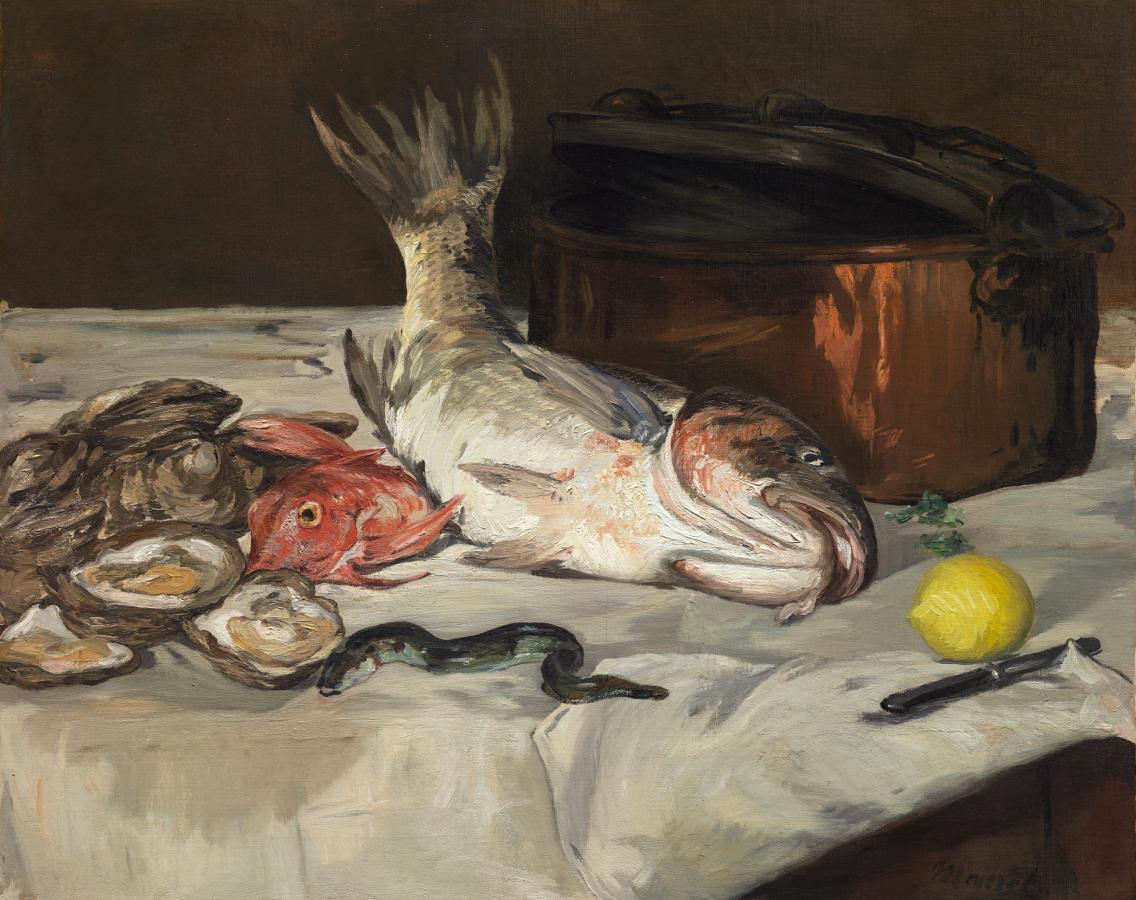Manet, Édouard (1832-1883)
Nature morte au poisson (Fish, Still Life)
1864
Oil on canvas, 73.5 × 92.4 cm
Art Institute of Chicago, Chicago
Although still-life ensembles were an important element in many of the major paintings of the avant-garde artist Édouard Manet, his most sustained interest in the genre itself was from 1864 to 1865, when Fish was painted. Manet’s focus on still lifes coincided with the gradual reacceptance of the genre during the nineteenth century, due in part to the growth of the middle class, whose tastes ran to intimate, moderately priced works. This painting, like many of Manet’s still-life compositions, recalls seventeenth-century Dutch models. The directness of execution, bold brushwork, and immediacy of vision displayed in the canvas, however, suggest why the public found Manet’s work so unorthodox and confrontational. While Fish is indeed an image of “dead nature” (nature morte is the French term for still life), there is nothing still about the work: the produce seems fresh and the handling of paint vigorous. Further enliven-ing the composition is the placement of the carp, which offsets the strong diagonal of the other elements. Manet never submitted his still lifes to the official French Salon but rather sold them through the burgeoning network of art galleries in Paris and gave them to friends. (AIC)
